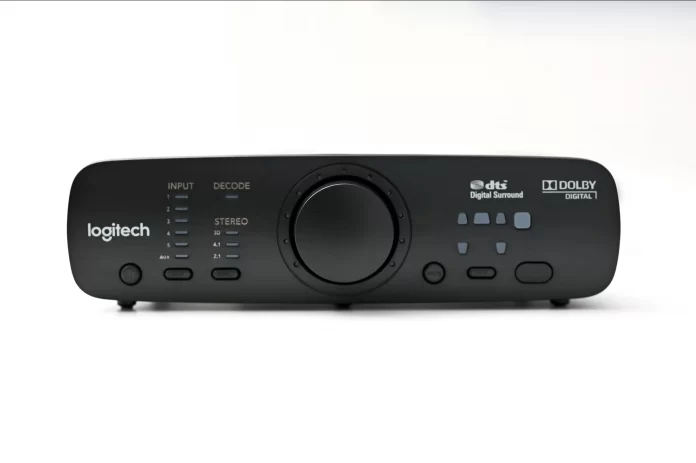Modern home appliances have a wide range of functions and are often quite complex. For example, to figure out how to connect a home theater with surround sound to the TV using HDMI, sometimes you have to spend a lot of effort and time. If you also connect all the speakers with wires, it’s easy to get confused about which cable, in which slot to insert.
Home theater creates a unique sound atmosphere when watching movies. The depth and power of the sound are simply mesmerizing. However, not many people know that home theater speakers can be used to play the sound from your TV. The TV isn’t designed to create a high-end audio experience. Its speakers are simply not capable of reproducing a wide range of frequencies. Anyway, here’s how to connect surround sound to a TV with HDMI.
How to connect to an audio system via HDMI
Initially, you need to know what version of HDMI is supported, usually, this information can be found in the manual. The HDMI version must be at least 1.4, which supports audio and video streaming through the cable. The essence of this connection is to connect all devices in series according to the “Receiver – Home Theater – TV” scheme. Version 1.4 of the HDMI ports supports this technology, also called ARC. Sometimes, HDMI can be converted to Coax.
The connection also requires a quality wire of the right length. Don’t save money, as a cheap wire will only offer you a “cheap” sound. The equipment connection itself is very simple – look for the HDMI-OUT output on the receiver, insert the cable, look for the HDMI-IN input on the speaker and insert the wire, take the second cable and insert it into the HDMI jack labeled HDMI-OUT, and the other end into the jack labeled HDMI-IN.
Sometimes an additional audio connector is needed to connect to the TV since the latter cannot receive both video and sound through HDMI, so be careful. Your TV is now connected to your home theater.
Read Also:
- How to fix HDMI no sound on laptop
- How to fix: PC doesn’t connect to a TV via HDMI
- How to fix can’t play sound with HDMI Windows 11
How to the surround sound system to the TV using HDMI
Virtually all LCD, LED, Ultra-HD, and plasma TVs are equipped with modern standard connectors, allowing you to connect a variety of multimedia devices. There are several connection options, each depending on the type of connectors located on the TV and receiver. Modern models are equipped with a standard HDMI connector, which is necessary for high-quality signal, as well as clear and vivid pictures. Don’t save money on this cable, it’s better to choose a high-quality and modern model of HDMI.
So, if you want to connect your surround sound to your TV with HDMI, you have to follow these steps:
- First of all, turn off the power to all AV components.
- Then, insert the plug on one end of the HDMI cable into the corresponding jack on the cable box. The plug only connects in one direction, so flip it over and try again if it doesn’t fit the connector on the first try.
- Plug the other end of the cable into any HDMI input on the back of the SSP.
- After that, connect the second HDMI cable to the HDMI video output labeled for TV on the back of the receiver, and connect the other end to any HDMI port on your TV.
- Turn on the power for your AV equipment.
- Finally, press the source selection button on the TV remote control repeatedly until a video signal appears on the TV screen. You can also change the input source on your Samsung TV without the remote control.
Once you have completed these steps, you will be able to connect surround sound to your TV with HDMI.
What is a surround sound?
Surround sound is an audio technique used to increase the depth and fidelity of sound, which is achieved by creating a speaker system in which each speaker represents a separate channel. The surround sound effect is achieved mainly through the distribution of the speakers in the room, through their placement.
This technique was first used in movie theaters, but it became so popular that many people wanted to have it in their homes, and the advent of home theater systems (HTS) has made it possible and, in some cases, quite affordable.
As a result, there were so many multichannel systems that a new unified standard was needed. Today, the leading standard is Dolby Atmos, with a fundamentally new technology of surround sound distribution. Whereas before the sound was distributed to the channels by the sound engineer when mixing the audio track, now it’s done in real-time by the sound processor. The sound engineer only needs to draw the direction of the sound in the proprietary software.
How does surround sound work?
When it comes to surround sound channels, you should pay attention to three numbers. These numbers represent the number of speakers in the surround system. For example, if you encounter a surround sound system called “7.1.2”, that system will include seven main speakers, one subwoofer, and two high-end speakers. The main speakers are responsible for the heaviest work in a surround sound system. These speakers provide positioning for most sounds in the frequency range.
Then comes the second number, or the number of subwoofers in the system. Subwoofers are responsible for the big hum and low tones that you hear (and feel) in all modern projects.
Finally, the last number in a surround sound system is less common than the others. This last number refers to the number of overhead or upward pointing speakers available in the system. This last layer of sound opens the door to even more detail and precise mixing.
However, all this splendor of surround sound wouldn’t be possible without the proper software and accompanying receiver. Dolby Atmos is one of the leading providers of surround sound software and a great example of the right process.
Read Also:
- How to control an external device connected via Anynet+ (HDMI-CEC) with the remote control on Samsung Smart TV
- How to change to HDMI on Insignia TV without remote
- Displayport to HDMI: adapter, cable explained
Why is surround sound important?
The importance lies in continually expanding the possibilities when creating immersive audio experiences. Without surround sound, our movies, games, music, and live performances would be limited to simple two-channel sound, which would diminish our ability to interpret and experience art.
Surround sound can also be used to treat and relax the listener. Binaural music uses different frequencies in each ear to create a soothing effect that can release different emotions. Ambient recordings can evoke the same effects, surrounding you with a stream of soothing frequencies to help you fall asleep, focus, or relax.






